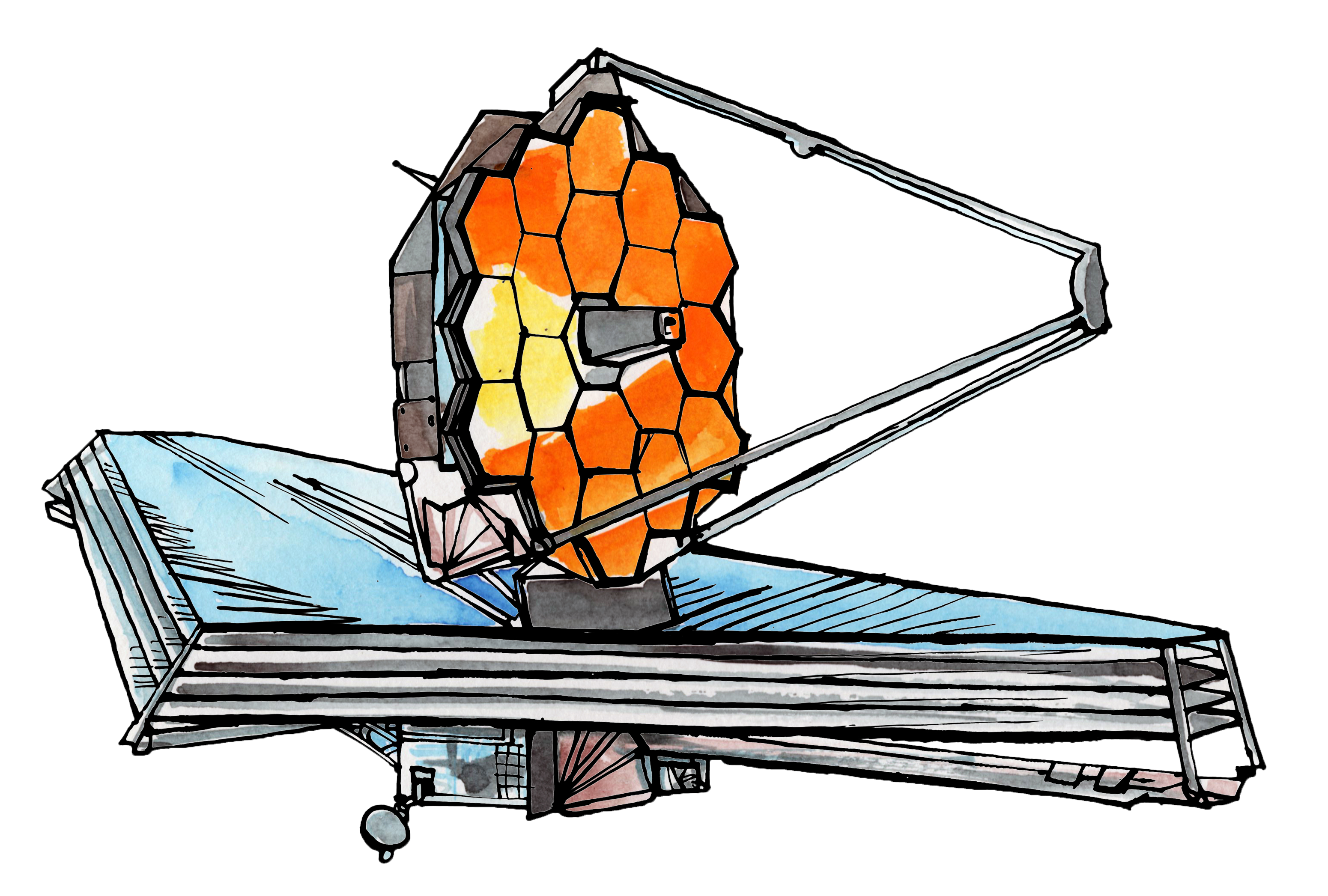Mission Overview

Wavelength Coverage

The James Webb Space Telescope features a 6.5 meter segmented primary mirror and 4 science instruments, each of which offers a variety of configurations and operating modes for infrared observing.
Active From
Launched December 25, 2021.
Resolution
Varies by instrument and observing mode.
Capabilities
- Imaging
- Spectroscopy
- Time-Series Observations
- High Contrast Imaging
For more information, please refer to the JWST Observer website.
Instruments
table
|
|
MIRI |
NIRCam |
NIRISS |
NIRSpec |
|---|---|---|---|---|
| Imaging | X | X | X | |
| Integral Field Spectroscopy | X | X | ||
| Multi-Object Spectroscopy | X | |||
| Single-Object and Time-Series Spectroscopy | X | X | X | X |
| Wide-Field Slitless Spectroscopy | X | X | ||
| Time-Series Imaging | X | X | ||
| Coronagraphy | X | X | ||
| Aperture Masking Interferometry | X |
Featured Data Products
JWST data will be available in various stages:
- Raw FITS Files (Stage 0): Raw spacecraft output converted to FITS file format
- Detector Corrected Exposures (Stage 1): Output count-rate images after applied detector-level corrections to raw data
- Flux Calibrated Exposures (Stage 2): Fully-calibrated individual exposures, and associated files, to all imaging/spectroscopy data and modes
- Calibrated Combined Products + Associations (Stage 3): Combined final data products specific to each observing mode
Search Tools
-
MAST JWST Search

Search through JWST observations using target names, program IDs, exposure type, CRDS context, file creation date, and more.







